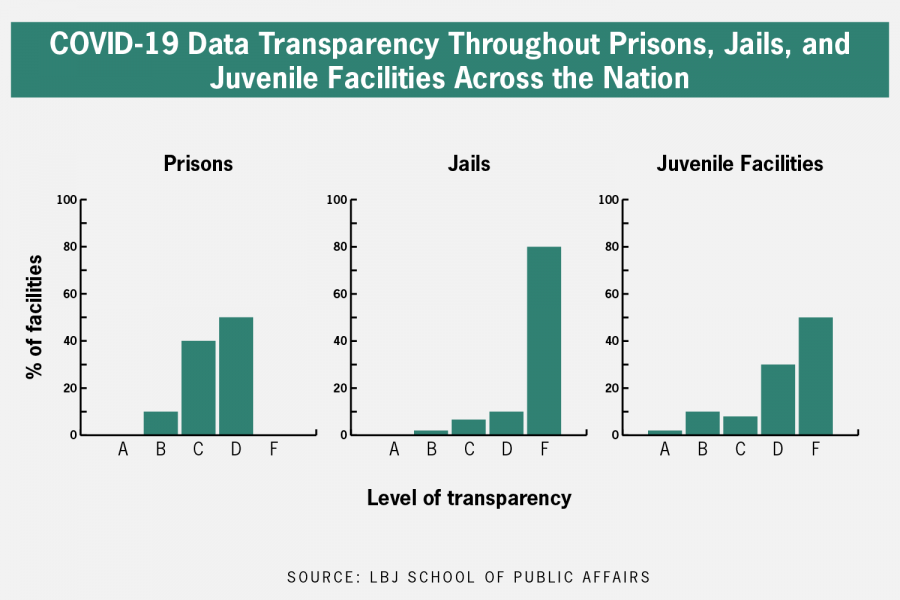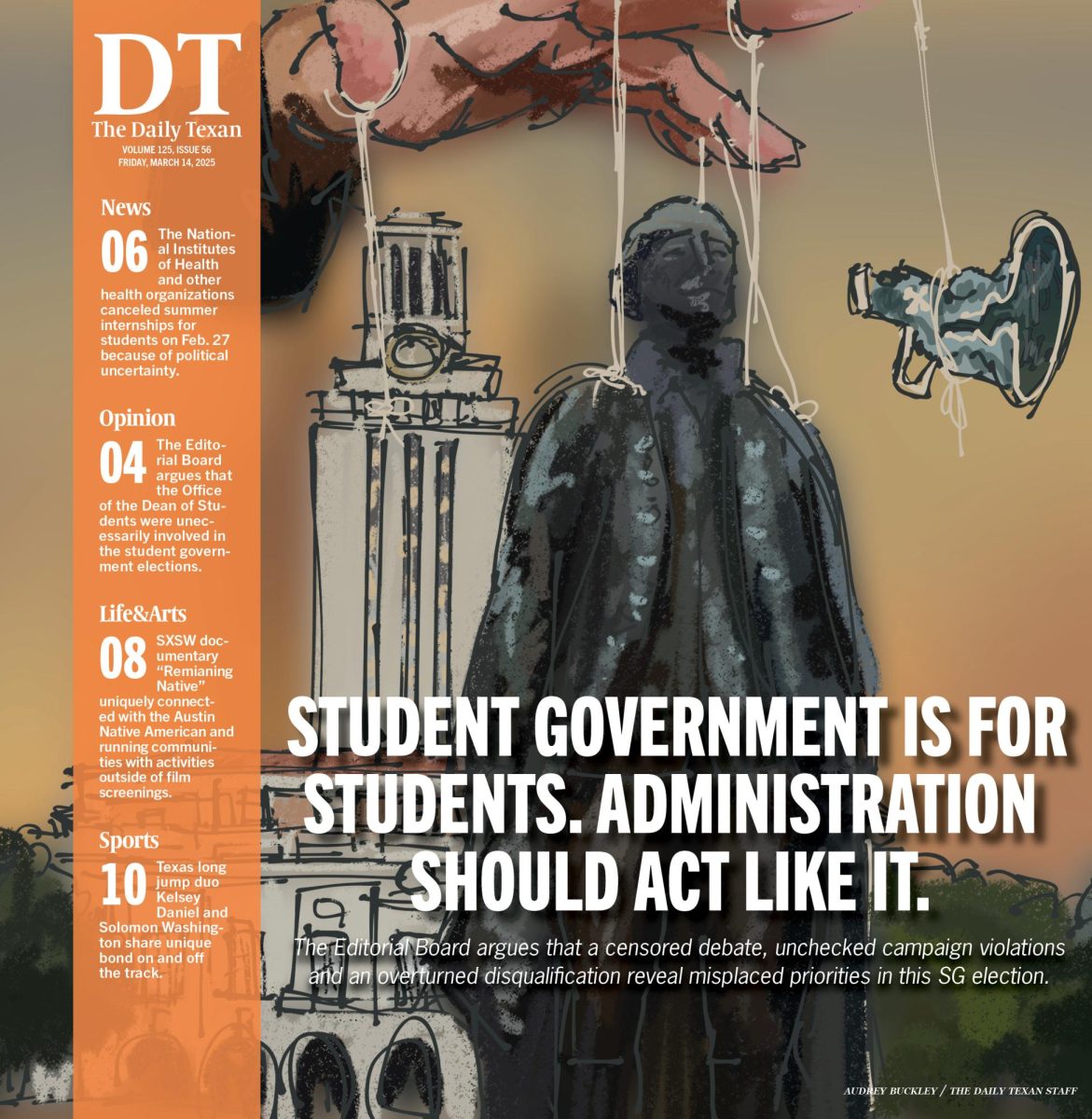UT-Austin researchers report lack of COVID-19 data in correctional facilities
April 6, 2021
Many correctional facilities across the nation lack transparency when communicating information about the spread and management of COVID-19, according to a study by researchers at the Lyndon B. Johnson School of Public Affairs.
The study, published in March, highlighted the lack of transparency of COVID-19 data in prison, jail and juvenile facilities across the country, said Michele Deitch, a LBJ distinguished senior lecturer. The study looked into the accessibility of COVID-19 data across 51 prison systems in the nation.
Deitch said that before the study, William Bucknall, intern for the COVID, Corrections, and Oversight project, was working on a small report regarding COVID-19 in jails and prisons. She said she noticed the lack of transparency in regards to data surrounding COVID-19, which led to her and Bucknall starting on the project.
“The more we sunk our teeth into it, we started thinking, ‘We really need to look around and see what every state is doing,’ and do it not just for prisons but also for jails and also for juvenile (detention centers),” Deitch said. “So it just kept growing in scope.”
Deitch said that the project used the data and information already accessible through public websites, such as corrections agencies’ COVID-19 data dashboards, social media sites and press releases. She said they scored the states based on how accessible the existing data was.
“We didn’t have to do any investigative sleuthing because the whole point was you shouldn’t have to,” Deitch said. “If it wasn’t readily available, they just didn’t get a good score.”
Bucknall said multiple health officials and websites have created guidelines for how and where agencies should publish their data and what metrics are included. He said there is a lot less guidance on dashboards for correctional facilities specifically.
“The most tedious part was grading 150 websites and the local jails,” Bucknall said. “I spent so (much) time on so many different data dashboards that I think I learned what makes them very accessible and easy to use and what’s important to have.”
Renee Alsept, a public defender in Seattle, Washington, said several of her clients at the Airway Heights Correctional Center have talked about their living conditions over the past year. She said those who tested positive would be kept in a gym area where they only had one or two bathrooms to share and were forced to sleep on the floor. At one point, there were hundreds of COVID-positive inmates in that area, she said.
“It’s terrifying to think about,” Alsept said. “The gym is not set up for comfortable (living conditions). So imagine testing positive for COVID-19 and having to be in that environment. It’s inhumane.”
Alsept said the lack of transparency is much like why the police hide “use of force” incidents.
“They don’t necessarily tell us about that either (because) they don’t want to be criticized,” Alsept said. “We still have not gotten very clear data from our jail.”
Deitch said the team hopes the research encourages agencies to be more transparent with the information and data they present to the public, using their report as a guide.
“What we’ve learned … is the importance of shining a light on what’s happening inside,” Deitch said. “It’s that transparency that helps keep the people who live and work in the facilities safe.”
Editor’s Note: This article first appeared in the April 6 issue of The Daily Texan.












